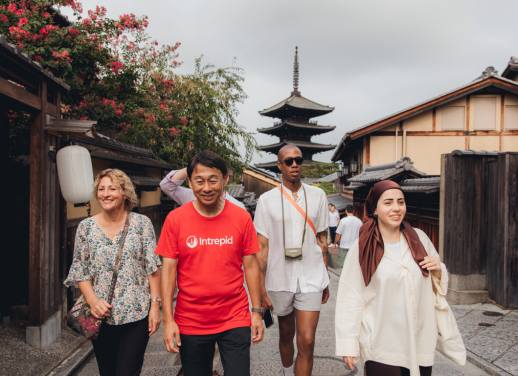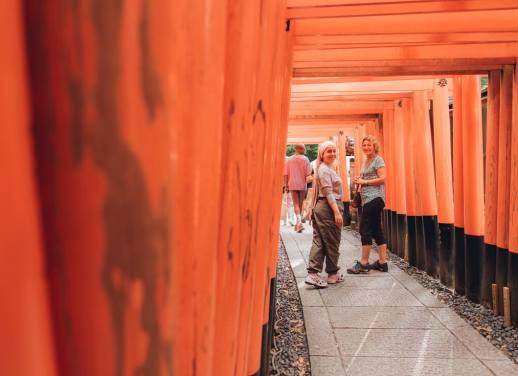The day before I was flying out from Tokyo for a family Christmas in Mexico, I had stopped to buy souvenirs from the my local supermarket (obligatory Pocky, bonito flakes, furikake); when I arrived home and unpacked, I realised – feeling ill – that my wallet wasn’t in my bag. It contained all my bank cards and my “foreigner” card, making reentry into Japan virtually impossible.
I raced back to the supermarket, and there it was, propped up above the bag-packing area; someone had placed it in a elevated spot so that whoever had lost it could see it on their inevitable return and distressed state. Not another customer paid it a second glance.
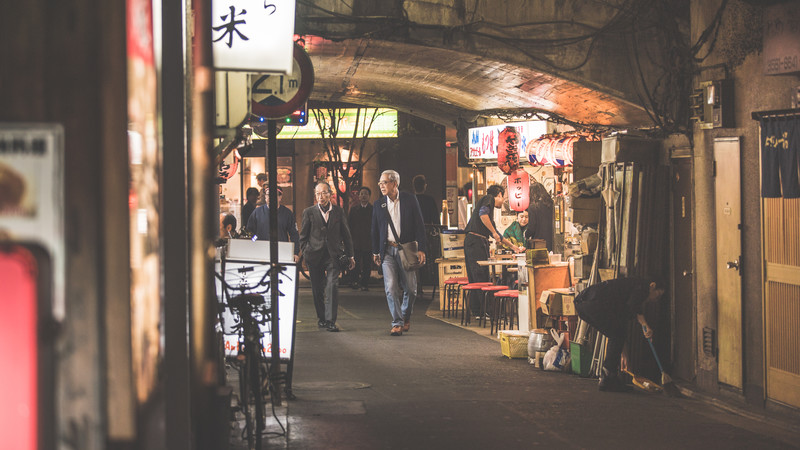
Photo by BENEMAC
Japan is often described as polite culture, but it’s instances like this (one of countless), “polite” doesn’t really capture the whole picture: it’s genuine consideration. Even the toilet seats kindly lift their lid on your arrival, flush automatically, and play sounds of the forest while you go about your business.
INTERESTED IN A TRIP TO JAPAN? CHECK OUT OUR RANGE OF SMALL GROUP ADVENTURES HERE.
To show your respect for the respect, and keep the charm alive, there are certain things to avoid and a few pro tips to keep in mind while you’re on your travels in Japan:
1. Bow back
Known as “o-jigi”, the custom of bowing as a salutation is characteristically Japanese; you’ll receive bows from shop clerks, restaurant and hotel staff, flight attendants – even from life-size human replicas of construction workers bowing to oncoming traffic at roadwork. As a foreigner, no one expects you to bow back, but it is definitely a nice and well-received gesture; and it doesn’t mean you have to step up to the level of the “bow off”s you see between groups of friends or businesspeople in the street (straight back, 45° angle, bend from the waist). Just give a little dip or exaggerated head nod.
2. Wear good socks (in preparation for taking your shoes off)
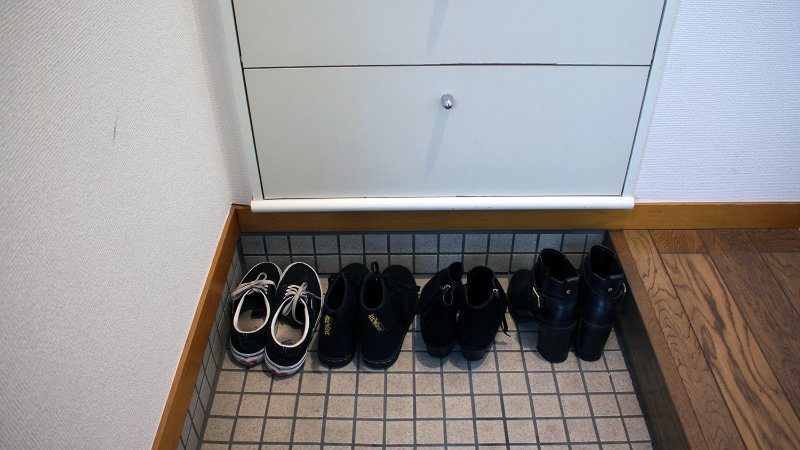
Photo by Jessie Thompson
You never know when you’re going to take your shoes off – inside houses, temples, changing rooms, on picnic rugs, at some restaurants (especially those with a tatami floor); the shoes lined up at the entrance, or rows of mini shoe-size lockers by the entrance will be the giveaway. After living in Japan for a while, it’s hard to see I ever thought it was appropriate to stomp through a house in the same shoes I trudged through the filth of the outside world. Wearing nice socks means you can take your shoes off with confidence.
Pro tip: Line up shoes and slippers with the toes pointing towards the door, making them easier to put on when you leave.
RELATED: HOW TO DO JAPAN LIKE A LOCAL (WITHOUT BREAKING THE BANK)
3. Don’t wear the loo slippers outside the loo
In venues where you have removed your shoes, there will most likely be plastic slippers in the bathrooms. These are to keep your nice little socks (see point 2) or feet clean. But a lapse in concentration can easily result in the awkward situation where have forgotten to change back and are chased down by hotel or restaurant staff, gesturing to your feet as you realise you’re parading around in what is regarded as soiled footwear.
4. Wrap your kimono or yukata (cotton summer kimono) with the left lapel on top
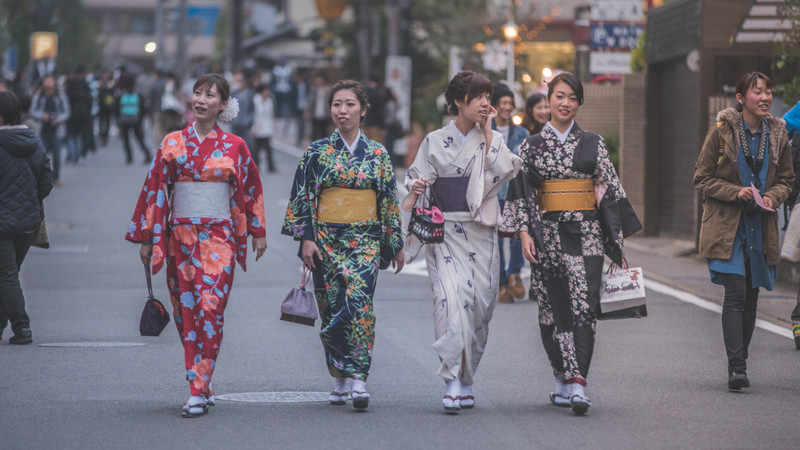
Photo by BENEMAC
This may feel counterintuitive, but unless you want to look like a corpse (for whom the right lapel on top is reserved), go with the left lapel on top. As for whether you have to wear something under your yukata around your hotel or out in the street? Well, I’m yet to get a straight answer.
5. Treat any business card (“meishi”) you are given as if it were Wonka’s Golden Ticket
When working for a Japanese company, there was a candidate who didn’t get a second interview on the basis that he’d left the manager’s business card behind on the desk. The manager seemed mortally offended, and any Japanese friend I recounted the story to thought it was justified. The meishi culture is strong in Japan – not just for business but socially, so chances are you’ll be on the receiving end at some point. When taking a business card, take the card with both hands, bowing, then put it into your card holder or wallet.
6. Operate in silent mode on public transport
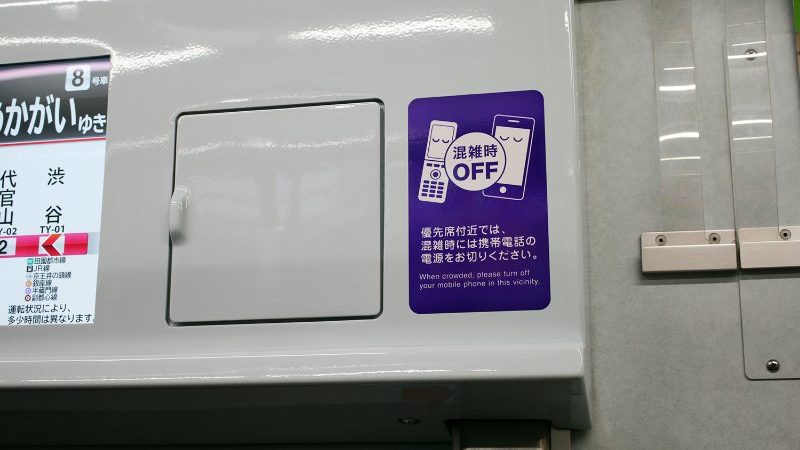
Photo by Jessie Thompson
For a city of 9.2 million people, Tokyo can be curiously quiet. One stand-out example of this is on public transport, where it’s regarded as rude not only to talk on the phone, but to receive any kind of audible phone communication. This means phones are kept in silent mode; if you have to answer a call, go into stealth mode and cover your mouth with your hands or a scarf.
RELATED: DO YOU REALLY NEED A RAIL PASS IN JAPAN?
7. Go easy on the hand towels you’re given at restaurants
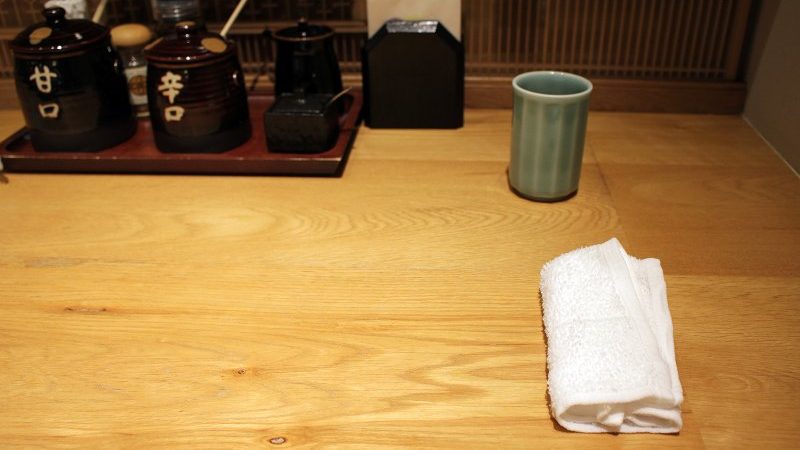
Photo by Jessie Thompson
This little wet towel is called “oshibori”, and you’ll be provided one at most restaurants and bars. Depending on the calibre of establishment, they’ll be anything from a disposable wipe in a plastic seal, to a towel scented with lavender and presented on a thin slice of polished semi-precious stone, served ice-cold in warmer months and warm in cool months. These are intended to clean your hands before a meal, but a little face and neck dabbing is also acceptable. As tempting as it may be on a humid summer day, or when you’ve out and about and are feeling grimy, the towel is not for a full wipe down.
Pro tip: Wipe your hands thoroughly, fold the towel neatly and place it to the side.
8. Don’t argue about paying for the obligatory small dish you’re served at some restaurants and bars, regardless of whether you eat it or not
Otoshi, the small dishes you may receive at some restaurants and bars, are like a cover charge, but an edible one. They’re a way of supplementing income for restaurants, and will generally only be around the 300 yen mark. The dishes often change daily, using seasonal ingredients, so aside from supporting the livelihood of a venue and taking the edge off your hunger while you decode a menu, they’re are a good way also to try something you may not have otherwise ordered (or may not even be on the menu).
9. Chopstick to your best ability, avoid certain no-nos
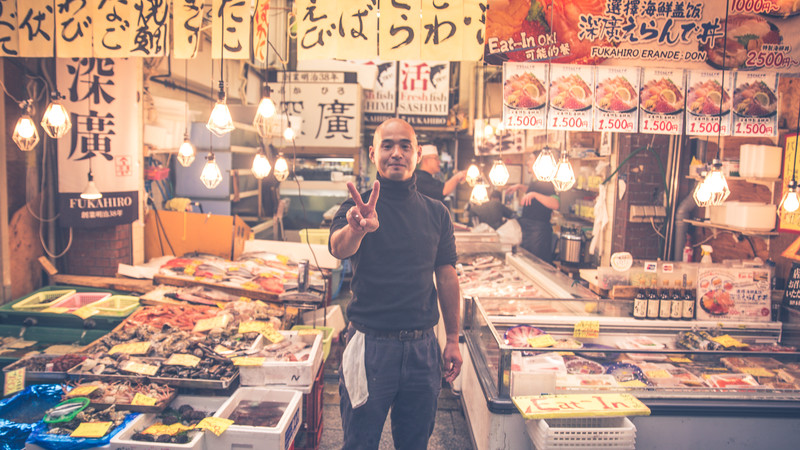
Photo by BENEMAC
Of the long list of chopsticks etiquette, some are suggested table manners (placing the chopsticks back on the rest provided) and others are no-no’s. These no-no’s include: standing your chopsticks up in a bowl of food (you wouldn’t really leave a fork stuck into your steak), passing food from your chopsticks to another person’s chopstick (which, aside from technical challenges, is reserved for funerals practices), spearing your food (spear-like appearance to the contrary, chopsticks are designed for picking things up), pointing at people with your chopsticks (which feels a little aggressive anyways), and licking your chopsticks (despite what manga may lead you to believe).
RELATED: JAPAN’S WORLD-BEATING CULINARY EXPERIENCE – CONVENIENCE-STORE FOOD
10. Hold off on tipping at restaurants. Say “gochisosama-deshita” instead
The tipping situation in Japan is not just a case of “not needing to tip”, but “literally not being able to leave a tip”; there’s an oft-recounted story of a tourist being chased down the street by waitstaff wielding their “forgotten money”. A simple bow and “gochisosama deshita” (“thank you for the delicious meal”) will be very well received.
11. Eat sushi like a local
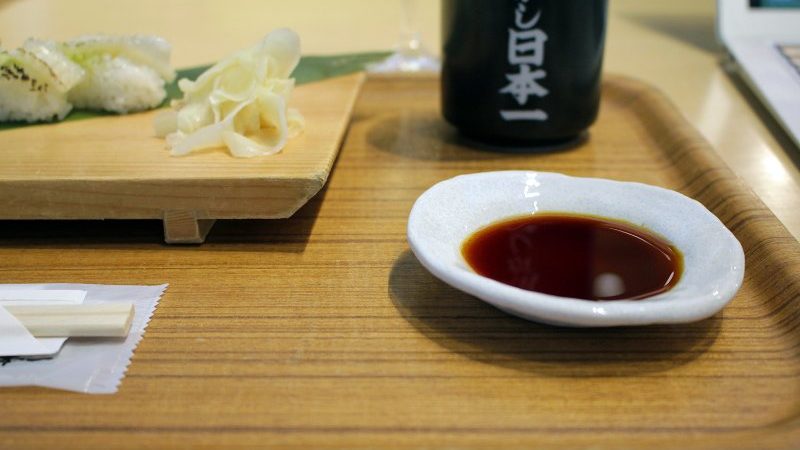
Photo by Jessie Thompson
Bottom line is enjoying the food you eat, which means eating sushi as you like it; but, out of respect for the shokunin (experts) making your sushi – and possibly a new-found way to enjoy it – this is how it’s done locally. Add just a small amount of soy to the dish (not a bathtub, as the soy is just to bring out the umami of the fish, not drown the flavour), don’t add ginger or wasabi to the soy sauce, and dip the fish – not the rice – into soy sauce. Sometimes the sushi chef will tell you soy sauce is not required, as they have already dressed it with another seasoning. And if you’re struggling with chopsticks, it’s OK to use your fingers – many purists actually insist on this.
12. Feel free to pick up bowls and bring closer to mouth
Japanese tableware is made for holding, so rather than struggling with the navigational logistics of food on chopsticks to mouth, you can bring the bowl of rice, pickles and other small dishes to your mouth.
13. Observe rice holiness
Rice is regarded as sacred, so is generally appreciated as is. You may think it’s going to be bland without all the soy sauce, but give it a go and you may be surprised – it’s slightly sweet and cooked al dente. The plainness is also a nice neutral reprieve from the other salty, fishy and umami flavours of other dishes.
14. Pour other people’s drinks before your own
This is pretty much a universal rule – but in a country where the omotenashi (hospitality) spirit dominates, it holds particularly true. If you’re wondering why your sake was poured to the point of overflowing at the bar, it’s to show they’re not being stingy. In this case, you drink from the glass, then pour from the dish into the glass.
Pro tip: If you’re drinking sake, use your left hand to hold the cup up to the kind friend topping you up, with your right hand resting underneath it.
RELATED: WHY JAPAN DOES WHISKY BARS BETTER THAN ANYONE
15. Keep your bag off the floor and out of the way
Restaurants, cafes and bars will all have either hooks or a shelf under the counter, or a basket next to the seat for your bags. This is partly to keep people from tripping up on it, and partly because the public floors are regarded as unsanitary.
16. Get naked at the public bath
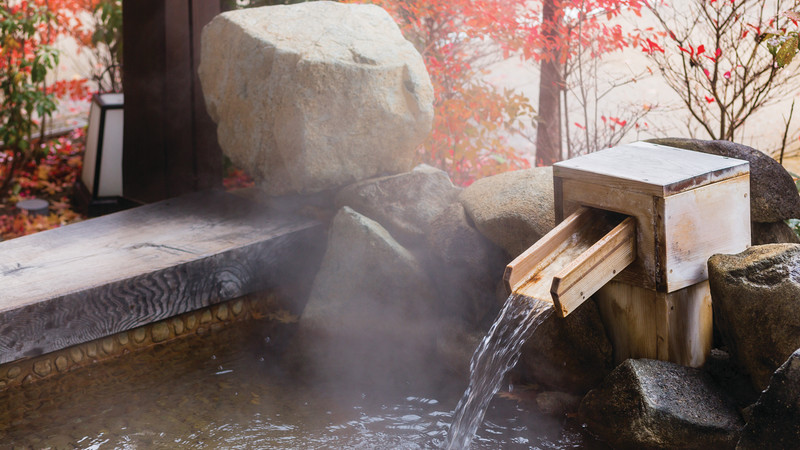
Photo by Sann von Mai, Shutterstock
This is entirely non-negotiable, so enjoy it. Japan is one of those lucky countries in the world blessed with natural hot springs, abundant rainfall, and a public bathing culture, so make the most of it on your visit. Once you strip down in the changeroom and store your clothes in the locker, make sure you wash thoroughly before entering the bath. If you’ve haven’t brought toiletries with you, and they’re not provided for free, you can buy them at the front desk.
RELATED: A NON-NUDIST’S GUIDE TO USING A JAPANESE ONSEN
17. Smoke only in the designated smoking zones
Rejoice all smokers, reel all non-smokers – smoking in restaurants, cafes, bars and clubs is still allowed in most venues in Japan; but it’s not allowed on the street, and can incur a fine.
Pro tip: If in a dining bar, ask the person next to you if they mind you smoking.
18. Hold back on that snack-on-the-go (unless it’s a can of beer, which seems to be OK)
Eating on the go is not really done, other than at festivals and around street food vendors. You can do it, and it’s not illegal, but you may attract some disapproving looks.
RELATED: WHAT TO EXPECT ON A CYCLING TRIP IN JAPAN
19. Don’t open or close a taxi door
Japanese taxis are ranked number one in the world – services like Uber and Lyft aren’t even a thing. It could be thanks to the impeccably clean interiors, lace-covered seats, drivers in suits, hats and white gloves – or it could be the automatic doors. Watch making this a habit though: when I go back to Australia and catch a cab, it often ends with, “Hey princess, close the door”.
20. Avoid jaywalking
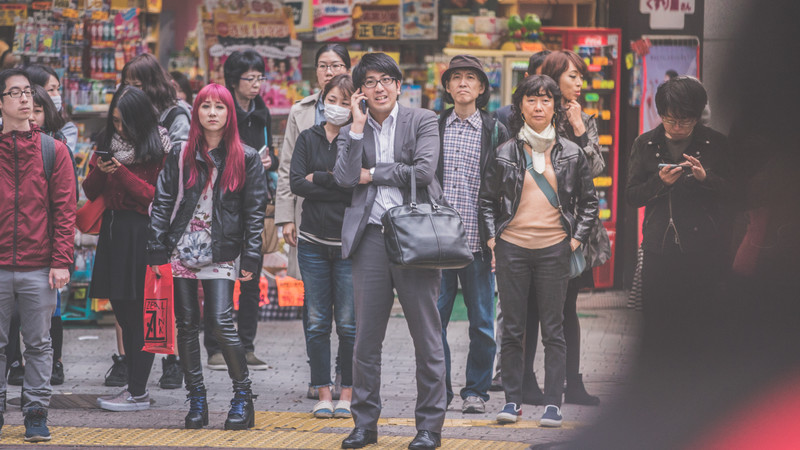
Photo by BENEMAC
In Japan, no one jaywalks – even when there are hundred of people waiting to cross the road and there are no cars in sight. While this may seem like an inefficient use of time, it’s this kind of thinking that keeps a city as densely populated as Tokyo running surprisingly smoothly.
21. Separate your rubbish (or expect a surly on Obasan on your doorstep)
If you’re staying anywhere but a hotel, you will be expected to sort your recyclables out from burnables (yep, rubbish is burned in Japan). This means separating cans, glass and plastics.
Pro tip: Remove the label and top from plastic bottles.
22. Be on time
In many parts of the world, we observe the code of acceptable tardiness, however this is not the case in Japan. If you arrive at a dinner party half an hour late, chances are it will have started, and it will be slightly awkward. This means allowing significantly more time to get places – especially if it involves navigating through Shinjuku or Tokyo station.
23. Remember: a smile goes a long way
A universal rule. Wear yours with pride, everywhere you go.
Now you’ve got the tips, you’re all set for your Japanese adventure! Browse our range of small group adventures in Japan.
Feature image by Ryoji Iwata on Unsplash.


